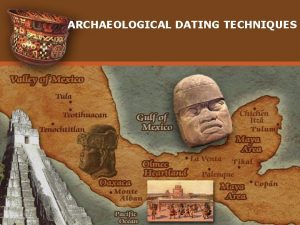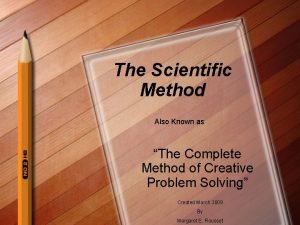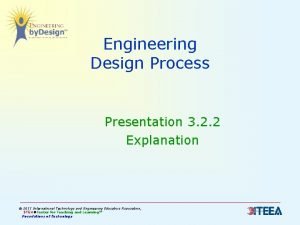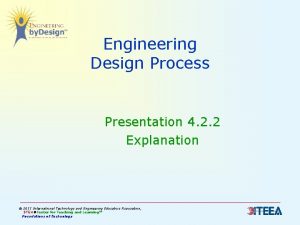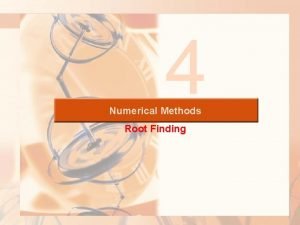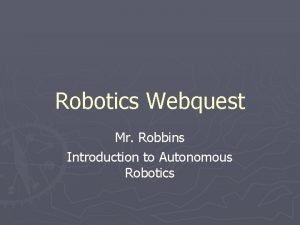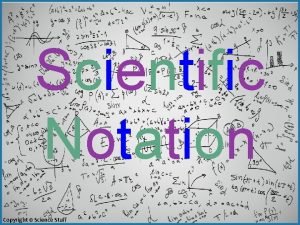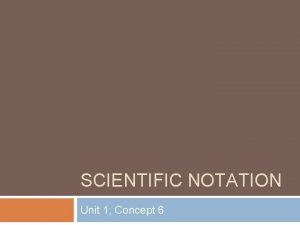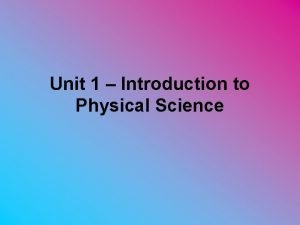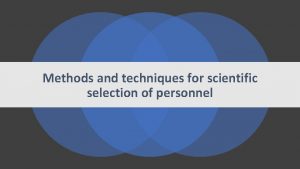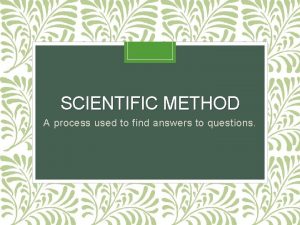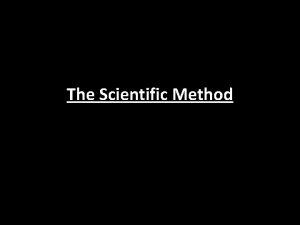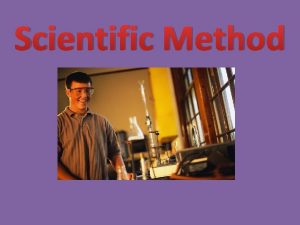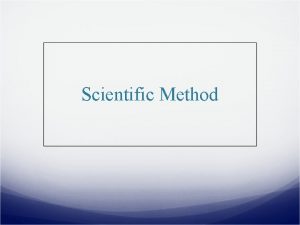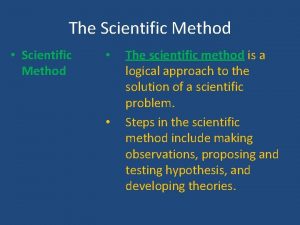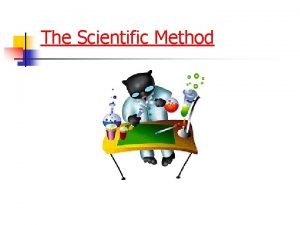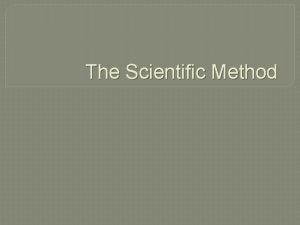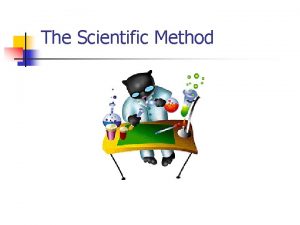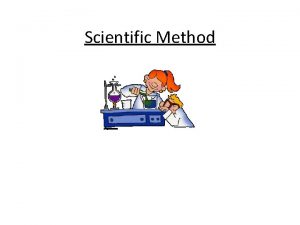SCIENTIFIC METHOD A process used to find answers














- Slides: 14

SCIENTIFIC METHOD A process used to find answers to questions.

Step 1: Identify the Problem • What do you want to know? • Problems are always written in the form of a question.

Step 2: Research the Problem • Learn what has been done before. • Resources include books, scientific journals, periodicals, magazines, interview, internet and encyclopedias. • Never plagiarize; always give credit when using another’s work.

Step 3: Form a Hypothesis • An educated guess. • It’s what you think will happen in your experiments. • A hypothesis is always based on your research and experience. • Sometimes your experiments will prove your hypothesis to be incorrect. "Scientist" by Marretao 22 - Own work. Licensed under Public Domain via Wikimedia Commons http: //commons. wikimedia. org/wiki/File: Scientist. jpg#/media/File: Scientist. jpg

Step 4: Procedure / Experiment • This is where you design your experiment. • The experiment is the testing of your hypothesis. • This step must be numbered and put in list form. "Archana-Sharma-Beam-Test-2004" by Original uploader was Sameergoswami at en. wikipedia - Transferred from en. wikipedia; transferred to Commons by User: Premeditated Chaos using Commons. Helper. . Licensed under Public Domain via Wikime

Materials List • Make a numbered list of everything you use to conduct your experiments.

The Experiment 1. Observations – record what happens in the experiment (what you see). Keep a log book or journal of everything you do and see, including errors. 2. Inferring – What can you imply (or infer) from what you observe. "Siberian Husky heterchromia edit" by user: Przykuta, corrected by Pharaoh Hound - Husky oczy 897. jpg. Licensed under CC BY 2. 5 via Wikimedia Commons -

Experiment: Variables 3. Independent Variable – the part of the experiment that you change to see how it affects the dependent variable. 4. Dependent Variable – the part of the experiment that changes in response to the changes you make to the independent variable.

The Experiment – cont. 5. Control –Use it for comparing. 6. Sample size – good experiments have large sample sizes to increase the accuracy of results. 7. Repetition- repeating experiments several times insure against experimental error and increase the size of results.

Step 5: Results / Data • This is the information that you gather from your experiment. • Quantitative data is recorded on charts, tables and graphs and is the most necessary. • Qualitative data includes illustrations and photographs. Sources must be included with photographs. Chart Title 15 10 5 0 Category 1 Category 2 Category 3 Category 4 Series 1 Series 2 Series 3

Step 6: Conclusion • This is a summary of your results. • State whether or not your hypothesis was correct. • What practical application does your project have, and / or describe a possible extension. • Identify and all possible errors. • What could you do differently to improve your project?

Bell ringer – use your notes • 1. What step of the scientific method do you form a hypothesis? • 2. What step of the scientific method do you give the results/data of the experiment? • 3. What step of the scientific method do you identify the problem? • 4. What step of the scientific method do you give the conclusion? • 5. What step of the scientific method do you research the problem? • 6. What step of the scientific method do you do the experiment?

Bell ringer • 1. What part of an experiment do you change? • 2. What part of an experiment do you measure changes? • 3. What 2 things should you do if you want a good experiment? • 4. When you do an experiment, what’s the 1 st thing you do?

Bell ringer – use your notes • 1. Why should an experiment be repeated? • 2. What is a hypothesis? • 3. What should an experimenter do after analyzing data? • 4. What is a series of carefully planned steps used to test a hypothesis? • 5. The process of trying to understand the world is called ______
 Information gathered during an experiment
Information gathered during an experiment What is thermoluminescence dating
What is thermoluminescence dating Scientific method crossword puzzle
Scientific method crossword puzzle Scientific method vs engineering design process
Scientific method vs engineering design process Scientific method vs engineering design process
Scientific method vs engineering design process Successive approximation method in numerical methods
Successive approximation method in numerical methods How is a scientific law different from a scientific theory?
How is a scientific law different from a scientific theory? Introduction of symposium
Introduction of symposium Where and how are robotics used for scientific exploration?
Where and how are robotics used for scientific exploration? Copyright science stuff
Copyright science stuff Unit 1 scientific notation worksheet answers
Unit 1 scientific notation worksheet answers K h d m d c m chart
K h d m d c m chart Using science skills
Using science skills Scientific selection process in hrm
Scientific selection process in hrm Six ps of planning
Six ps of planning

